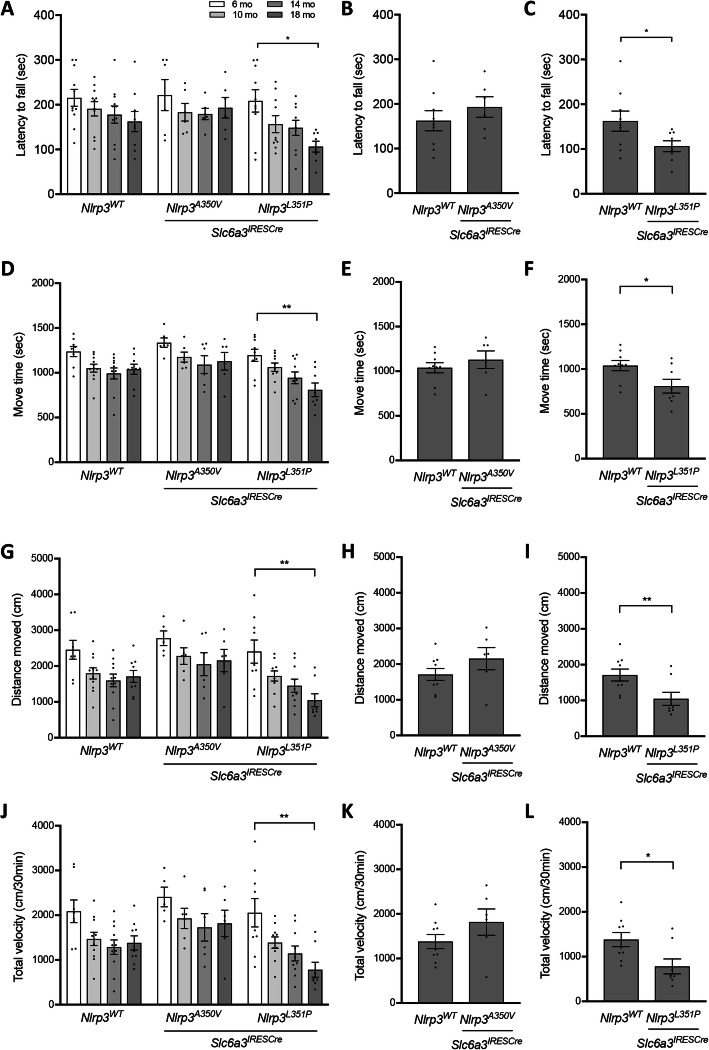Fig. 2.
Behavioral analysis revealed significant reduction in motor function over time in Nlrp3L351P cohort. Behavioral analyses were conducted at 6, 10, 14, and 18-month time points in cohorts (Nlrp3WTn = 11, Nlrp3A350Vn = 6, Nlrp3L351Pn = 9). aNlrp3L351P mice had significant rotarod behavior deficits with age (two-way ANOVA, p = 0.0211 (genotype), p = 0.0052 (time); Tukey’s post hoc multiple comparisons test, * p = 0.02). b, c Endpoint analysis at 18 months shows Nlrp3L351P expressing mice, not Nlrp3A350V, were significantly impaired compared to Nlrp3WT (* p = 0.026, t test). In open field analysis, animals expressing Nlrp3L351Pd moved for significantly less time (two-way ANOVA, p = 0.0018 (genotype), p < 0.0001 (time); Tukey’s post hoc multiple comparisons test, ** p = 0.0027), g moved a significantly shorter distance (two-way ANOVA, p = 0.0008 (genotype), p < 0.0001 (time); Tukey’s post hoc multiple comparisons test, ** p = 0.0015), and j traveled at a significantly lower velocity (two-way ANOVA, p = 0.0008 (genotype), p < 0.0001 (time); Tukey’s post hoc multiple comparisons test, ** p = 0.0020) at 18 months compared to 6 months of age. No significant changes were observed in the Nlrp3WT and Nlrp3A350V over time. Endpoint comparison at 18 months between cohorts revealed a significant decline in f move time (* p = 0.0135, t test), i distance moved (** p = 0.0085, t test), and l total velocity (* p = 0.01, t test) in animals expressing Nlrp3L351P compared to Nlrp3WT animals. e, h, k This difference was not observed in Nlrp3A350V expressing animals when compared to controls. Error bars represent s.e.m.

